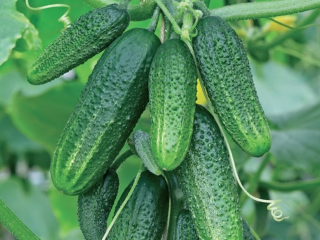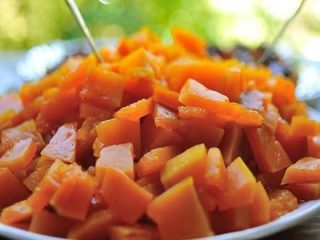Content
From a botanical point of view, there is no difference between rutabaga and turnip as such. Both vegetables belong not only to the same family, but also to the same genus. However, from the point of view of the average consumer, there is a difference between these two vegetables, and it lies not only in culinary differences.
What is the difference between rutabaga and turnip?
Naturally, there is a difference between turnips and rutabaga. Moreover, in some issues they have a pronounced character. For example, despite the same growing conditions, the agricultural technology of plants may differ due to the timing of their ripening. The taste of plants, as well as their nutritional and caloric content, are slightly different. Next, the features of these vegetables and their differences from each other will be presented.
Origin
The exact history of the appearance of rutabaga is unknown. There is an assumption that it was obtained relatively recently, no more than 500 years ago, in southern Europe. A plant appeared artificially or naturally, the result of an accidental crossing of a turnip and one of the varieties of local cabbage. However, since the vegetable is most popular in the northern regions, this assumption is most likely incorrect.
According to another version, rutabaga was first obtained in Eastern Siberia at the beginning of the 17th century, from where it first came to the Scandinavian countries, and then gradually spread throughout Europe.
With turnips, everything is much simpler: it was known to mankind as early as 2000 BC. Appearing for the first time in western Asia and the Middle East, the culture quickly spread almost everywhere.
Spreading
The crops now have almost completely identical habitats, since their growing conditions are the same. For normal ripening, the plant needs low temperatures (from + 6 ° C to + 8 ° C). Keeping vegetables at temperatures above + 20 °C for too long (especially in the final stages of ripening) negatively affects the quality and taste of the fruit.
That is why plants are grown on an industrial scale mainly in the northern regions and in regions with a moderate or sharply continental climate. In regions with warm or hot climates, only a few adapted types of turnips can be found.
Appearance
The appearance of the above-ground parts of both plants is very similar: identical yellow four-petal flowers collected in raceme-type inflorescences, very similar leaves, pods and seeds. The main differences lie in the appearance of the root crops.
Traditionally, turnips have a flattened root shape, while the rutabaga root is often pointed. Rutabaga root vegetables have a slightly thicker skin than turnips. The color of the skin also differs: turnips usually have a light, uniform yellow or whitish-yellow color, the rutabaga root is gray, purple or red at the top, and yellow at the bottom.
There is also a difference in the appearance of the flesh: here rutabaga is a little more varied, its flesh can be of almost any shade, while turnips are most often white or yellow.
Compound
Plants have the following differences in vitamin and mineral composition:
- rutabaga has about a quarter more vitamin C content (up to 25 mg per 100 g);
- it contains more fats (saturated acids - almost 2 times, monounsaturated - 3 times, polyunsaturated - 1.5 times more);
- it contains more minerals (potassium, calcium, sulfur, magnesium and iron).
Otherwise, the composition of the vegetables is approximately the same.
Usage
Both vegetables are used both raw and processed. They go into various salads, first and second courses. Can be used stewed, boiled and fried. Traditionally, turnips were cooked in their own juice, and rutabaga was cooked in combination with other types of vegetables in various dishes, such as stews. However, nowadays both vegetables can be used in a wide variety of forms and cooking methods.
The taste differences between rutabaga and turnip are subjective. Rutabaga is considered less tasty, although it is actually more beneficial for the body as a whole.
Both cultures also have uses in folk medicine. They have similar not only methods of application or lists of diseases, but even contraindications.
Features of growing rutabaga and turnips
Growing turnips and rutabaga is very similar. In fact, the process of planting and caring for plants is completely identical, with the exception of two points: the timing of ripening and the resulting timing and methods of planting vegetables.
Turnips (depending on the variety) have a ripening period of 60 to 105 days. For rutabaga this time is significantly longer. The earliest ripening varieties ripen in 90-95 days, while for most varieties these periods are 110-130 days.
In practice, this leads to the fact that turnips are often grown in two sowings: in early spring (April, rarely May) or in early July. At the same time, the harvest of the first sowing is collected and used in the summer, and the result of the second sowing is collected almost at the end of autumn for winter storage in cellars and vegetable stores.
With rutabaga, a similar method of growing will not work, since the “first wave” of the vegetable simply does not have time to ripen. And it's not just a matter of timing. For normal ripening, rutabaga and turnips require a relatively low temperature (+ 6-8 ° C). And if the “summer” turnips of the first wave can somehow be eaten, then no one will definitely like the taste of unripe rutabaga.
In addition, to further improve the taste of turnips harvested for the winter, they are harvested approximately 2-3 weeks after rutabaga. And the reason for this is also gastronomic in nature: ripening rutabaga in September-October improves its taste to a lesser extent than a similar process for turnips.
Therefore, it is recommended to harvest rutabaga in mid-late September, and harvest turnips in the 2-3rd decade of October. This means that turnip planting dates will be in June-July, and rutabaga in April-May. Moreover, if in April there is no guarantee that there will be no frosts dangerous for rutabaga, it is better to use the seedling method of growing.
For turnips, as a rule, the seedling method is never used.
What is better to choose
It is impossible to give a definite answer to this question, since each person’s taste preferences are individual. It is believed that rutabaga is healthier, but less tasty. But this is not a particular problem, since each of the vegetables can be prepared either maintaining or changing its taste. In addition, often both products are not used independently, but are included in more complex dishes.
From the point of view of usefulness, turnip will be more preferable in the fight against colds, and rutabaga - in normalizing metabolism. If we talk about the effect on the digestive system, then the difference in both vegetables will be small.
Conclusion
The difference between rutabaga and turnip, although invisible at first glance, is still present. Despite the close relatedness of the plants, they are still different species. Plants have differences in the appearance of root crops, their vitamin and mineral composition, even their agricultural technology is slightly different. All these differences naturally affect the taste of vegetables and their areas of application.















